NASA’s Lucy spacecraft marked a major milestone on April 20, 2025, when it zoomed past asteroid 52246 Donaldjohanson at close range. At 1:51 p.m. EDT that day, which happened to be Easter Sunday, Lucy skimmed within roughly 600 miles (960 km) of Donaldjohanson. This flyby was confirmed successful when Lucy “phoned home” shortly afterward, indicating the spacecraft remained in good health.
Mission managers billed the encounter as a “dress rehearsal” for the spacecraft’s future targets, using Donaldjohanson to practice the complex procedures that will be needed when Lucy visits the Trojan asteroids near Jupiter in a few years. Although Donaldjohanson is a main belt asteroid and not one of Lucy’s primary science targets, the flyby provided an invaluable test of Lucy’s instruments and tracking systems under real mission conditions.
It also offered scientists a sneak peek at a fascinating ancient space rock and a chance to refine their skills before tackling Lucy’s main destination.
Why Is Asteroid Donaldjohanson Important?
This close approach had scientific merit in its own right. Donaldjohanson is believed to be a fragment from a collision about 150 million years ago, making it one of the youngest asteroids ever visited. Studying such a “fresh” asteroid fragment can shed light on the collisional processes that still shape the asteroid belt.
In fact, Lucy’s principal investigator, Dr. Hal Levison of Southwest Research Institute, noted that “Asteroid Donaldjohanson has strikingly complicated geology”, and that examining its features in detail will help reveal “important information about the building blocks and collisional processes that formed the planets in our Solar System”. The mission team is eager to piece together Donaldjohanson’s story – all while gaining confidence for the even more challenging encounters to come.
It’s also worth noting the poetic link embodied in this mission’s name. The asteroid Donaldjohanson itself is named after paleoanthropologist Donald Johanson, who discovered the Lucy fossil in 1974. The fossil Lucy transformed our understanding of human origins, and now a namesake spacecraft is investigating our planetary origins.
Fun fact? Dr. Johanson himself has actually followed the Lucy mission with enthusiasm. In a conversation with scientists prior to the flyby, he was asked what he might name a hypothetical second moon or companion if one were found orbiting “his” asteroid. Laughing, he replied that he’d have to give it some thought.
Close-Up Images Reveal a Bizarre ‘Peanut’ Shape
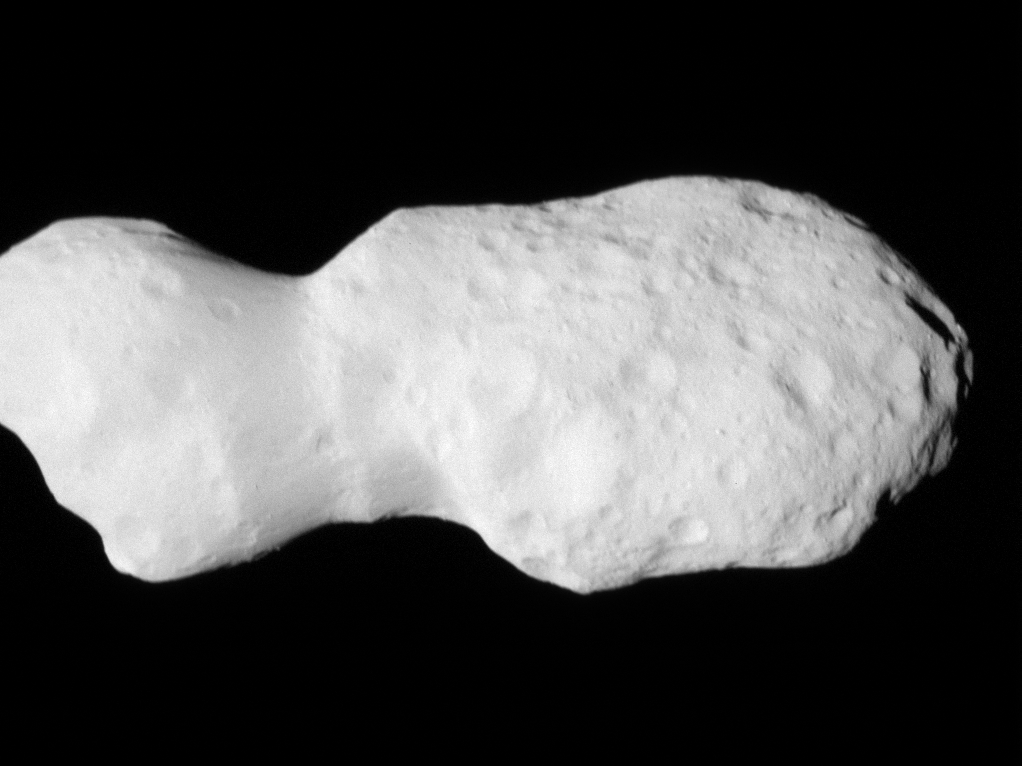
The first images beamed back from Lucy show that Donaldjohanson is an elongated, bi-lobed asteroid – essentially two chunks of rock fused together in what’s known as a “contact binary.” In Lucy’s crisp black-and-white photos, the asteroid resembles a peanut or a dumbbell, with two end pieces (lobes) connected by a thinner “neck” of material.
Mission scientists had suspected an elongated shape based on the asteroid’s brightness variations observed from Earth, but they were surprised by the odd form of the connecting neck, which one described as looking like “two nested ice cream cones” stuck tip-to-tip.
The newly obtained close-ups resolve surface details as small as a few tens of meters across, revealing that the larger lobe (on the right in the close-up above) is pockmarked with many more craters than the smaller lobe (left), which has a smoother surface. This difference hints that one side of the asteroid may have a different history or age than the other – a clue for researchers decoding how the binary form evolved.
Donaldjohanson Keeps on Surprising
From a preliminary analysis of the imagery, Donaldjohanson also turned out to be bigger than expected. Early ground-based estimates had put its length at around 4 km, but Lucy’s images indicate the asteroid is about 5 miles (8 km) long and 2 miles (3.5 km) wide at its broadest. In fact, it’s so elongated that Lucy’s camera couldn’t capture the entire asteroid in one frame during the closest approach.
“It’s a great problem to have,” joked one mission scientist, noting that the asteroid’s true shape will be fully mapped once all the flyby frames are stitched together. Additional data collected by Lucy’s other instruments – including color images and infrared spectra from the L’Ralph instrument, and thermal readings from the L’TES radiometer – will further reveal the asteroid’s composition and surface properties over the coming weeks.
The first snapshots alone have delighted the science team, offering a tantalizing glimpse of Donaldjohanson’s surface: a smooth, light-gray terrain dimpled by craters, with a surprisingly slender waist connecting its two ends. Scientists are already poring over these pictures to decode the asteroid’s geologic past.
The abundance of craters on the larger lobe suggests it has been exposed to space for longer (accumulating more impact scars), whereas the smaller lobe’s relative smoothness could mean it resurfaced more recently or consists of different material. Such complexities underscore why Lucy’s team is excited to study this object in detail. “Every asteroid has a different story to tell, and these stories weave together to paint the history of our solar system,” said Dr. Tom Statler, the Lucy program scientist at NASA Headquarters.
How Did Lucy Do It? The Technology Behind the Close-Up
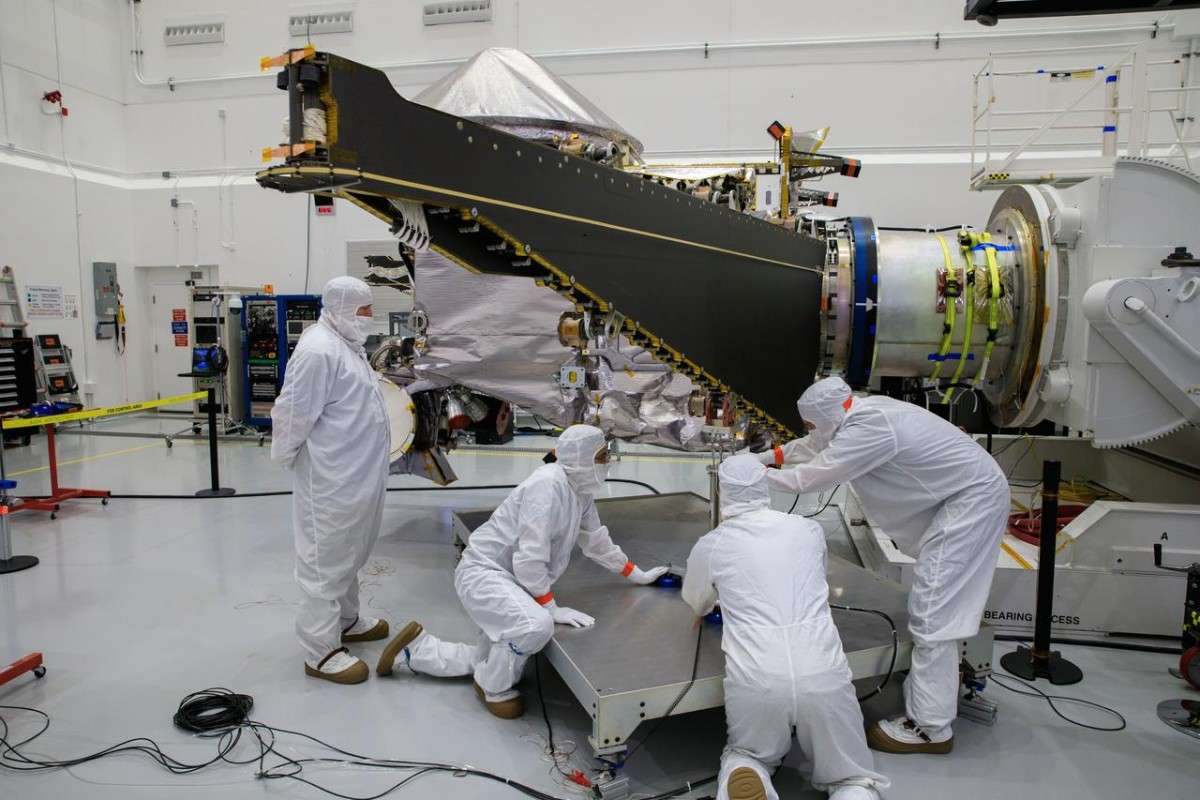
Lucy is a solar-powered probe equipped with three primary instruments to survey asteroids during high-speed flybys. For the Donaldjohanson encounter, all three instruments were in action, performing an observation sequence very similar to what will be done at the Trojan targets:
- L’LORRI – Lucy’s Long-Range Reconnaissance Imager, a high-resolution monochrome camera, captured the sharp close-up images of Donaldjohanson. L’LORRI acts as Lucy’s “eagle eye,” spotting fine surface details from hundreds of miles away. It was developed by Johns Hopkins APL and is akin to the powerful telescopic cameras flown on previous missions like New Horizons. During the flyby, L’LORRI snapped images as quickly as one every 2 seconds, which were later compiled into a brief movie showing Lucy’s approach and departure.
- L’Ralph – A color imager and infrared spectrometer combined in one, used to map the asteroid’s surface composition. L’Ralph can detect minerals, ices, and organic molecules by looking at how the asteroid reflects sunlight in visible and infrared wavelengths. Though such data takes longer to transmit, they will tell scientists what Donaldjohanson is made of – crucial for comparing with other asteroids.
- L’TES – The Thermal Emission Spectrometer, an infrared bolometer that measures the asteroid’s heat radiation to gauge surface temperature and thermal inertia. By recording how quickly the asteroid’s surface heats up in sunlight and cools down afterward, L’TES can infer whether the surface is rocky, dusty, or porous. This adds another dimension to understanding the asteroid’s physical properties.
All of these instruments are mounted on a platform that can swivel to keep a target asteroid in view as Lucy speeds past. In fact, about 30 minutes before closest approach to Donaldjohanson, Lucy had to autonomously turn and point its instruments at the asteroid, temporarily suspending communication with Earth while it tracked the target. The spacecraft used an onboard terminal tracking system to lock onto Donaldjohanson and execute a tightly choreographed imaging sequence.
In this case, the geometry of the flyby required an extra precaution: Lucy deliberately stopped tracking the asteroid about 40 seconds before the nearest point of approach to avoid aiming its sensitive cameras too close to the Sun. Just after the flyby, the probe reoriented to face the Sun again, recharged its batteries, and then turned its high-gain antenna back toward Earth to “phone home” with the results.
Lucy’s Journey: Mission Goals and Significance
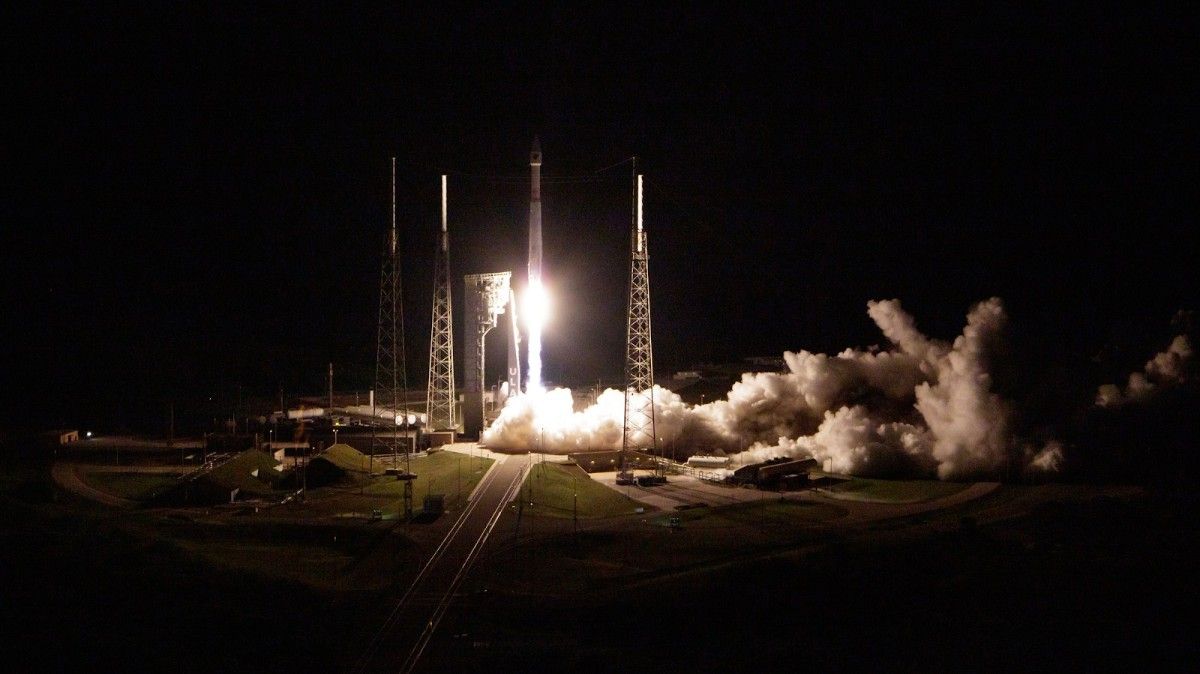
The Lucy mission was named in honor of humanity’s famous fossil ancestor, “Lucy,” and that is no coincidence. Just as the discovery of the Lucy skeleton provided key insights into human evolution, NASA’s Lucy spacecraft is tasked with uncovering clues about the origin of our Solar System by studying primordial asteroids. As mentioned, the mission’s primary targets are the Trojan asteroids – two large swarms of small bodies that share Jupiter’s orbit, clustered around the Lagrange points ahead of and behind the giant planet.
These Trojans are essentially time capsules from the solar system’s youth, thought to be remnants of the materials from the solar system’s birth that have been trapped in Jupiter’s orbit for billions of years. Lucy is the first spacecraft ever sent to visit these distant asteroids, and scientists believe that by examining their composition, structure, and geology up close, we can better understand how the planets (including Jupiter and even Earth) formed and evolved.
Lucy’s journey is an ambitious 12-year odyssey spanning the inner and outer solar system. Launched on October 16, 2021, the spacecraft has been leveraging Earth’s gravity with multiple slingshot flybys to slingshot itself outward. After two Earth gravity assists (in 2022 and 2024) to boost its trajectory, Lucy is now on course to tour an unprecedented eight asteroids in total. This includes two main-belt asteroids (tiny Dinkinesh and Donaldjohanson) as warm-up acts, and six Trojan asteroids near Jupiter, which are the main event.
The Dinikesh Encounter: A Notable Mention
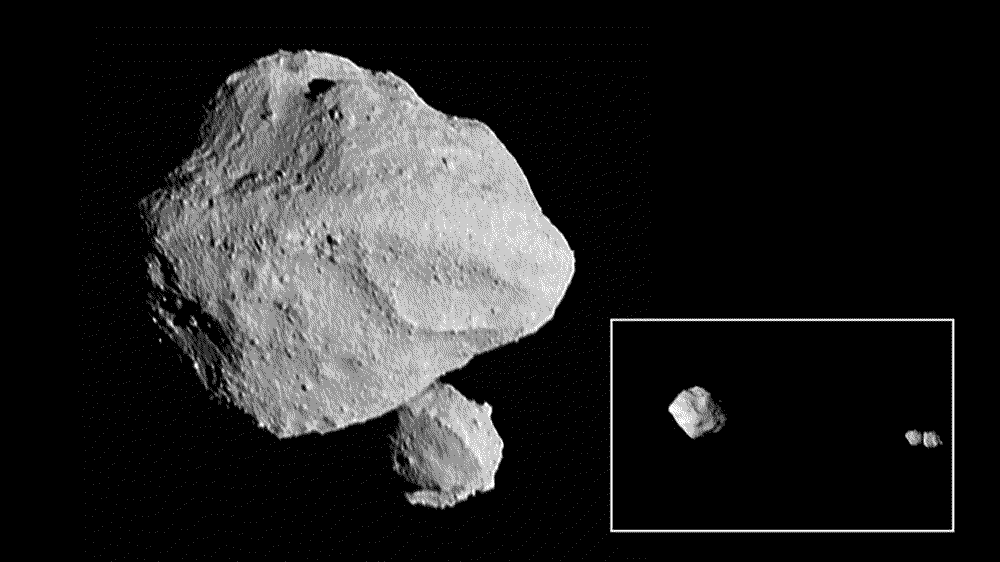
Lucy’s first asteroid encounter was with Dinkinesh (also known as 152830) on Nov. 1, 2023, a mini-asteroid only about half a mile across. That quick November 2023 flyby successfully tested the spacecraft’s tracking systems and even revealed that Dinkinesh has its own small moon (subsequently named Selam) – a surprise bonus for the team. The April 2025 Donaldjohanson flyby served as a full-scale test of all science operations, ensuring Lucy’s instruments and procedures are ready for the much more distant Trojan targets to come.
Upcoming Trajectory: What’s Next for Lucy?
According to mission planners, Lucy will spend the next two years cruising through the main asteroid belt before reaching its first Trojan destination in August 2027. That target will be Eurybates, a roughly 40-km Trojan in the leading (Greek) swarm, accompanied by a tiny satellite named Queta.
Lucy is slated to fly by Eurybates (and image Queta) in 2027, followed in quick succession by encounters with other Trojans in that swarm: Polymele (September 2027), Leucus (April 2028), and Orus (November 2028). After looping back toward Earth for another gravity assist, Lucy’s grand finale will be a double flyby of the Patroclus-Menoetius binary asteroid in the trailing (Trojan) swarm around 2033, bringing the total to eight Trojan asteroids visited by the mission’s end.
Each of these space rocks is unique, covering a range of sizes, compositions, and surface ages, and together they will provide a comparative treasure trove of data on the building blocks of the outer solar system.
Why Study Asteroids like Donaldjohanson?
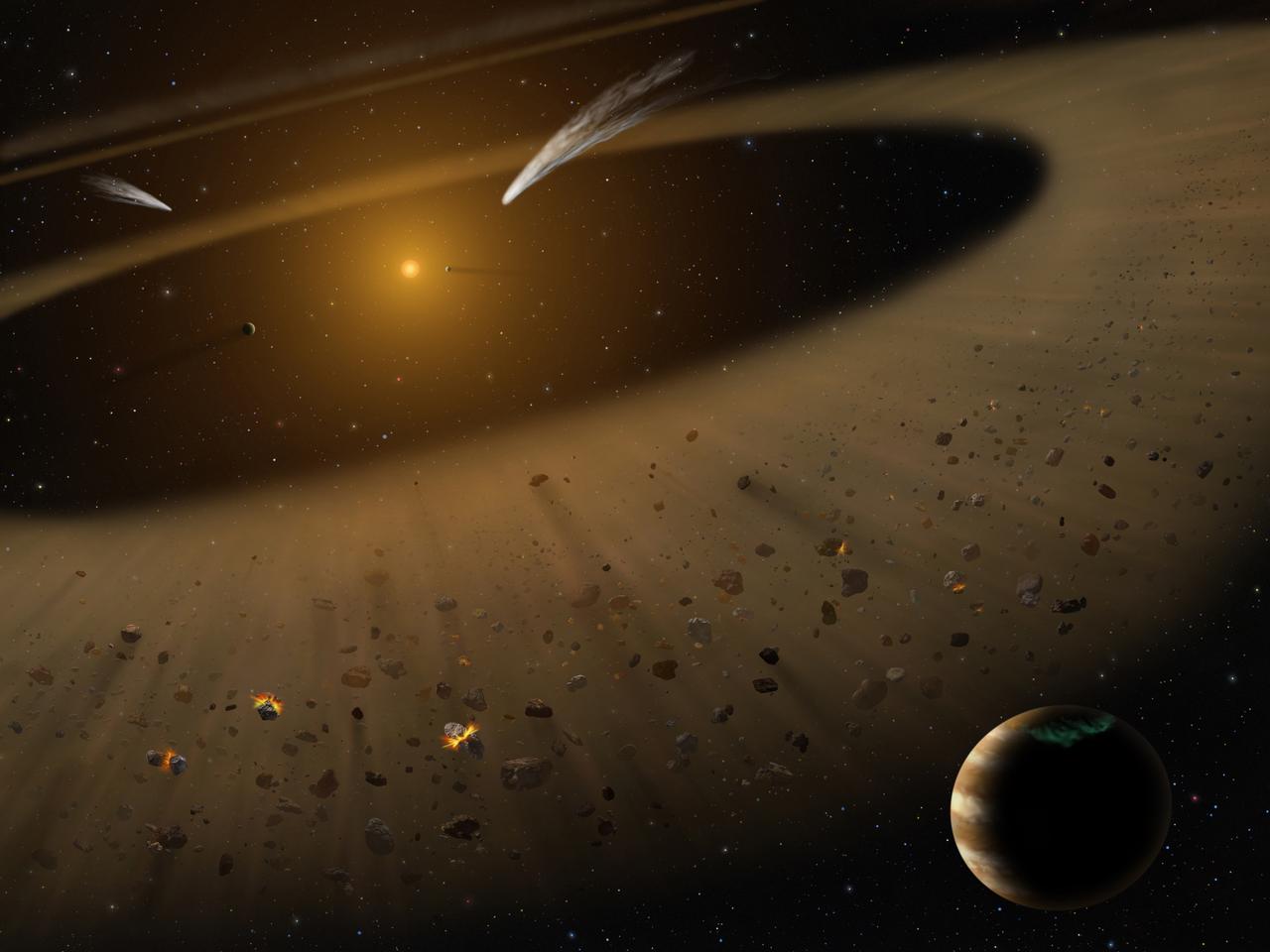
Asteroids may be small, but they hold outsized importance in piecing together solar system history. Main-belt asteroids like Donaldjohanson are the leftover debris from the planet formation era, essentially raw materials that never formed a planet, remaining as records of the early solar system environment.
By examining an asteroid that is a known fragment of a larger body (as Donaldjohanson is), scientists can learn about the forces and outcomes of catastrophic collisions. Donaldjohanson’s very existence as a contact binary, formed when two rubble piles gently merged, speaks to the processes of accretion and aggregation that were happening among planetesimals eons ago.
The textures and craters on its surface record impacts over millions of years, acting like a geological logbook. As Dr. Levison noted, analyzing Donaldjohanson’s complex geology could illuminate the “building blocks and collisional processes” that ultimately shaped the rocky planets. In other words, studying such asteroids helps fill in chapters of the story of how Earth and its neighbors came to be.
Excitement and Next Steps
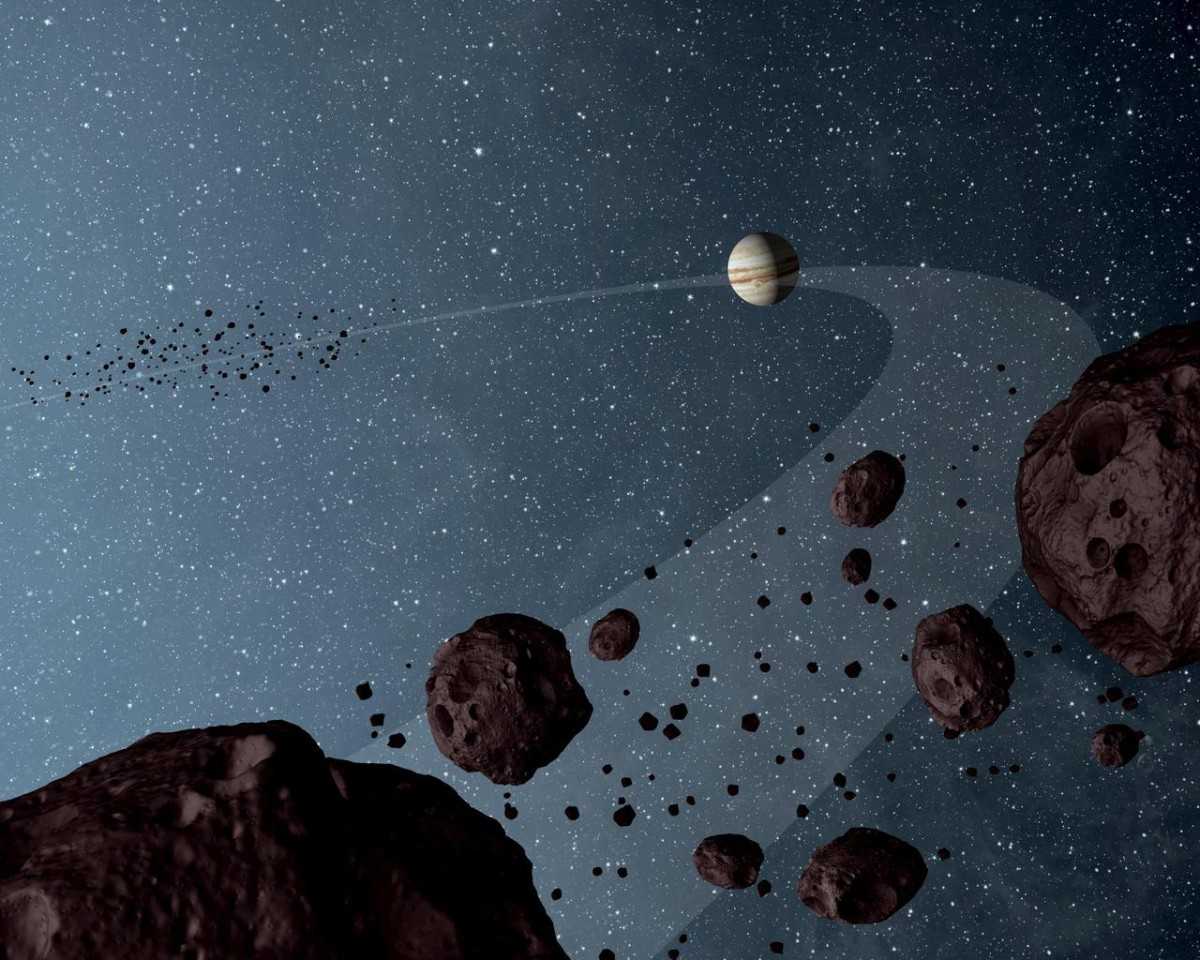
The success of the Donaldjohanson flyby has the Lucy team jubilant and confident as they press onward. This was Lucy’s second asteroid flyby of the mission, coming on the heels of the November 2023 visit to Dinkinesh, validating that the spacecraft’s systems can perform a complex encounter as designed.
The mission team also highlighted that each asteroid encounter provides new surprises. In the case of Dinkinesh, Lucy unexpectedly found a companion moonlet; with Donaldjohanson, the sheer complexity of the asteroid’s shape and geology has “knocked our socks off,” in Statler’s words. It’s a reminder that even small worlds can defy expectations.
With Donaldjohanson behind it, Lucy’s epic journey now turns toward Jupiter’s realm, and we can’t wait to see what it reveals next. Each flyby will be like opening a new chapter of a very old book. If the Donaldjohanson rehearsal is any indication, the pages of that book will be filled with intriguing and unexpected stories about our solar system’s youth. NASA’s Lucy is truly charting a course into the past, and with each asteroid encounter, we uncover a bit more about the origins of planets and the ingredients that made our own world.